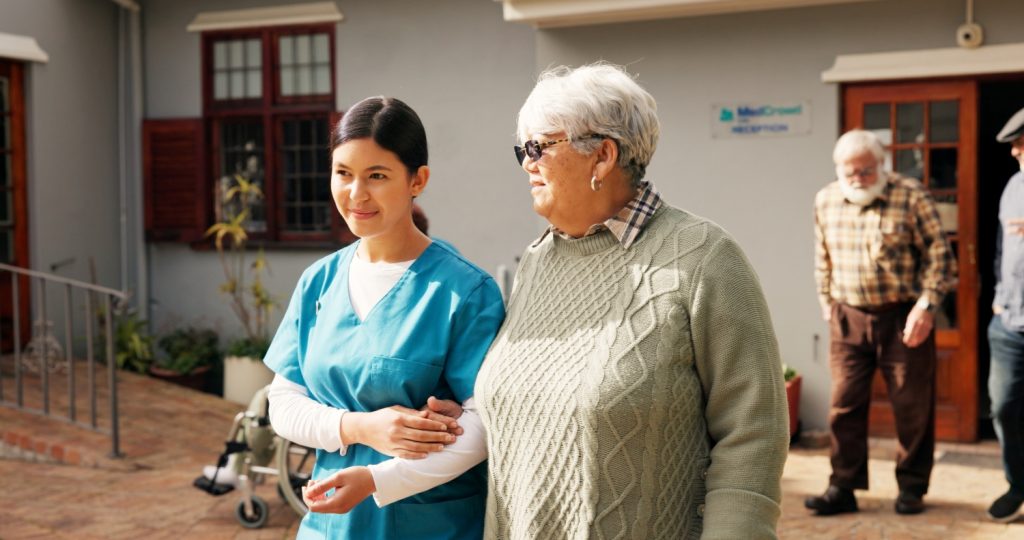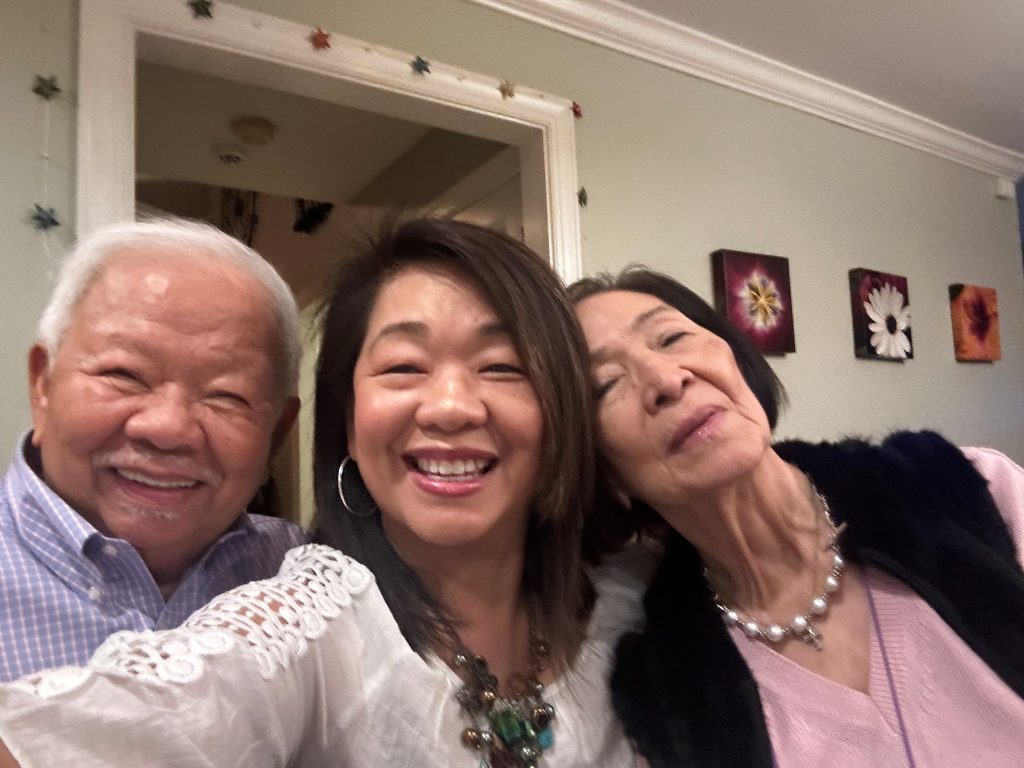Abstract
Unpaid caregivers provide essential support for older family members in the United States, often at significant personal and financial cost. With no universal infrastructure for long-term care, caregivers may turn to programs like Social Security for relief. Our mixed-methods study uses Health and Retirement Study data and in-depth interviews to explore how caregivers manage retirement and care responsibilities. Early findings point to a complicated picture, as caregivers piece together support from multiple sources. The United States needs federal investment in long-term care and caregiver supports to address this systemic issue.
Key Words: unpaid caregiving, Social Security, retirement security, financial strain, long-term care policy, mixed-methods research
Note: The names of participants quoted in this article have been changed for confidentiality.
One in five adults care for an older family member in the United States without pay, and often without adequate financial support (Goad, 2025). Unlike many of its peers, the United States has no universal infrastructure for managing long-term care. Instead, it relies upon a patchwork of supports— Medicaid, community agencies, private insurance, and family networks—to meet the needs of people who require care and their caregivers (MedicaidLongTermCare.org, 2025). Caregivers’ essential work goes undervalued as a result, and public programs fail to treat unpaid caregivers as deserving of focus and support.
Medicaid is one public institution that addresses long-term care, but it primarily does so from the perspective of the care recipient. Medicaid provides institutional care for those who qualify under their state’s income and asset limits, or Home- and Community-based Services (HCBS) through waivers, but waivers are not always available even when adults qualify for Medicaid. Some states allow Medicaid beneficiaries to pay family members through consumer-directed care programs, but only 33 states allow spouses to be paid (MedicaidLongTermCare.org, 2025).
As a result, unpaid caregivers may resort to using Social Security benefits for financial support. We hypothesize that adult children or spouses of an elder may claim Social Security benefits primarily to supplement or replace income lost because of their unpaid care work. This means they likely will have claimed earlier than they planned or is optimal, which reduces their lifetime benefit and puts them at risk for financial insecurity in old age.
Social Security was not intended as a partial subsidy for unpaid care work nor is the system designed to pay for the cost of care. Some needing long-time care qualify under Medicaid, but many do not. Those who do not qualify for Medicaid pay for care from retirement income, including Social Security benefits. But retirement income, especially for the large share of retirees who primarily rely upon Social Security, is not nearly enough to cover the cost of care. People dependent upon unpaid care receive that care mainly from family members (Goad, 2025, The Care Collective, 2020, & Tronto, 1987).
Our research aims to better understand the dynamics between eldercare, Social Security benefits, and retirement. Neither multivariate statistical analysis of large data sets nor interviews alone will help us understand why unpaid caregivers claim Social Security benefits when they do. Together, in what is called a “mixed methods approach,” we hope to understand how unpaid caregivers interact with Social Security as they move toward and through retirement.
Mixed Research Methods Provide Coherent Interpretations of Data
Among adults ages 65 and older who need help with activities of daily living (ADLs), approximately 44% receive care from a spouse (Forden & Ghilarducci, 2023). Caring for a spouse and reduced paid work are correlated, with research showing that caregivers have lower labor force participation rates than their peers not providing care (Forden, 2024). It can be difficult, however, to econometrically disentangle whether reduced work participation is due to caregiving demands or pre-existing differences in income and job access (Van Houtven et al., 2013).
Interviews help us understand why caregivers decide when to retire and claim Social Security. We see a correlation in the numbers between caregiving responsibilities and labor force participation, but how did the evolving responsibilities of caregiving influence the caregivers’ planning processes? Interviews help identify the support systems caregivers use—siblings, family, neighbors, community—which often are not captured in quantitative data, but can impact the pool of resources, financial and otherwise, that affect caregiver decision-making.
‘Judith, a woman in her late 60s, has cared for family members since she was 30.’
Using semi-structured interviews, we ask caregivers to reflect on their decision-making process, share how they make ends meet while supporting their loved ones, and explain how caregiving responsibilities have changed their relationship to retirement. Consistent themes have already emerged after completing nine (of 24) interviews with caregivers who are between ages 56 and 70 and living predominantly in the Northeastern United States. Participants were recruited from the New York City metro area through community listservs, posters, and outreach to cultural and senior centers.
Caregiving Creates Present Needs that Complicate Future Planning
Caregivers are stretched thin. Particularly striking is the common experience of balancing multiple primary caregiving responsibilities, simultaneously or in quick succession. Participants, overwhelmingly women, especially Black women and other women of color, may initially discuss caring for one relative, only to later clarify that they have also been the primary caregiver for a spouse, child, sibling, grandparents, etc. (Meyer, 2000). For some, this has meant loss of income and work opportunities compounded over many years, in addition to the toll of demanding emotional and physical care work. As they approach retirement, these stressors become more apparent.
Judith, a woman in her late 60s, has cared for family members since she was 30—traveling between states and burning the candle (and her finances) at both ends to provide near-constant care for her grandmother, her uncle, and her mother. Approaching retirement, Judith realizes she now has to “take care of my own self.”
Allison (age 70), who supported her mother through dementia until she passed away last year, left work at age 45 to care for her children and then became her husband’s primary carer in his battle with cancer. When we asked Allison what prompted her to leave work, she was quick to respond: “Everybody needed me.”
Like Judith and Allison, other interviewees have spent years focused on the responsibility of caring for family to the detriment of preparing for their own retirement. This can mean that caregivers feel insecure going into retirement, worrying about their own and their loved ones’ costs. Interviewees shared that family members’ costs were mostly paid through a combination of retirement accounts, Social Security payments, Medicare, and benefits like SNAP. Many incidental costs, however, come out of caregivers’ pockets and can add up to more than $7,200 a year (Skufca & Rainville, 2021). While all expressed concern that older relatives might outlive their savings, participants’ concerns were often not so future-oriented. They focused instead on managing needs in the present.
Linda (age 65) supports her 93-year-old father and makes ends meet in Manhattan through a small pension and Social Security. She’s taking care of her and her dad’s health; so financially, “whatever I’m going to get from my monthly amount that I get, I’m going to have to make it work.” She has a 401(k), but she has drawn it down over the years. Now it’s only a backup, “for any emergency that I might need.” Josie has cared for her grandmother, mother, and husband for the past decade.
‘I would not have been able to be sitting with her in the hospital every day, if I had a full-time job.’
Having left full-time teaching, Josie is focused on giving her family what they need now: “I will use her [mother’s] Social Security. I will use her pension. And I will use what I have. So, I’ll do for my family, but I’ll cut corners on me.” When we talk about savings for her own future, she says, “That’s the biggest argument I have with my family.” She’d like to be putting money aside, but “saving is really hard because there’s always something that needs to be done.”
To meet the demands of care responsibilities and their own well-being, participants cobble together various resources, like Linda drawing down her 401(k) and Josie combining her and her mother’s financial resources. While Social Security retirement benefits are one piece of the puzzle, continuing to work underpinned many of our participants’ financial plans. The majority of those we’ve spoken to—with an average age of 64—still work for pay, and some have returned to work after retiring.
Deepti (age 58), a physician who cares for her mother, manages her own serious health condition. She’s not currently working at her very demanding job. Deepti is frustrated by her overlapping circumstances: if her health improves, she’ll return to work, but work means she will be less available for her mom. When asked if Social Security might offer flexibility, Deepti responds that the check won’t be enough to cover her own growing medical bills. Her plan is instead to work longer. “I’m going to try to push [work] to 70, because I’ve lost some money over the last few years, and the expenses are piling up.”
Juggling the costs of care, unemployment, and COVID, Judith claimed Social Security at 62 despite her plan “to wait until at least full retirement age.” The payments bridged her income after her mother’s death and through the pandemic, but she’s back in full-time work and now her benefit checks are garnished for overpayment. Like Deepti, she sees her previous unemployment as a double bind. “I would not have been able to be sitting with her in the hospital every day, if I had a full-time job … so it turned out that it was for the best, other than economically.” Social Security offered Judith support at a difficult time, but it was ultimately a float between periods of full-time work.
Social Security can provide meaningful support for family caregivers. In particular, participants caring for older parents said that relatives’ benefits are instrumental in managing their care. But carers are less likely to link their own Social Security claiming to care responsibilities. The potential impact of receiving additional income each month, however, cannot be ignored, especially for family carers focused on making life work in the present. Our interviews highlight the ways that resources must be combined and suggest that while Social Security can provide some relief, it is not enough.
We Need Public Investments in Caregivers
Today, unpaid caregivers to elders piece together support from multiple sources, many never designed to meet care needs, to make their financial lives work in the present. The stories told through our interviews highlight that:
- Caregivers need resources targeted to their needs in the present. Caregivers are focusing on work-for-pay and piecing together various resources like Social Security that were not designed nor intended to meet caregivers’ needs. Better resourcing caregivers in the present—through, for example, cash transfers and direct payments for care—will provide caregivers with much-needed relief.
- Present financial constraints prevent caregivers from planning for retirement. Caregivers are explicitly or implicitly prioritizing present care needs over their futures. By better resourcing caregivers today, programs like consumer-directed care that pay family caregivers for their care labor, not only provide relief in the present, but also create space for future planning. Expanding such programs can contribute to meeting both the current and future needs of caregivers.
- Pay family caregivers by expanding consumer-directed programs that allow such caregivers to be paid for their labor. This includes broadening the list of adults who are able to qualify as preferred caregivers, and making bureaucratic processes more accessible by simplifying procedures and decreasing administrative load on caregivers to receive payments.
- Caregivers need programs that support their future retirements. Caregivers do not have the resources to plan for retirement, and instead many use funds from 401(k)s or Social Security to provide for others’ care needs in the present. Programs that support building caregiver retirement security without taking away from current needed resources, like allowing unpaid care to count toward Social Security work credits, will ensure that those who spend their lives caring for our society’s most vulnerable are not left financially vulnerable in their old age.
Without a robust public safety net for unpaid caregiving, the United States will continue to rely upon inadequately supported family members—specifically women, people of color, and women of color—as the underappreciated foundation of an already strained eldercare system.
Jessica Forden is a doctoral student in economics at The New School and a doctoral fellow with the Schwartz Center for Economic Policy Analysis in New York City. Erin Simmons is a doctoral candidate in anthropology at The New School and a qualitative researcher with the Schwartz Center for Economic Policy Analysis. Teresa Ghilarducci, PhD, is a labor economist and expert in retirement security. She is the Bernard L. and Irene Schwartz professor of economics at The New School for Social Research and the director of the Schwartz Center for Economic Policy Analysis (SCEPA) and The New School’s Retirement Equity Lab (ReLab). Siavash Radpour, PhD, is an assistant professor of economics at Stockton University in New Jersey.
Photo credit: Shutterstock/Pressmaster
References
Forden, J. (2024). Elder caregiving frequency, labor force participation, and work. Journal of Aging & Social Policy, 1–16. https://doi.org/10.1080/08959420.2024.2422671
Forden, J., & Ghilarducci, T. (2023). U.S. caregiving system leaves significant unmet needs among aging adults. The New School, Schwartz Center for Economic Policy Analysis. https://www.economicpolicyresearch.org/resource-library/u-s-caregiving-system-leaves-significant-unmet-needs-among-aging-adults
Goad, K. (2025, March 11). The huge financial toll of family caregiving. AARP. https://www.aarp.org/caregiving/financial-legal/info-2025/financial-impact-caregiving.html
MedicaidLongTermCare.Org. (2025, March 19). Consumer directed care & medicaid long term care: Benefits, eligibility and how it works. https://www.medicaidlongtermcare.org/basics/consumer-directed-care/
Meyer, M. H. (2000). Care Work: Gender, Labor, and the Welfare State. Routledge.
Skufca, L., & Rainville, C. (2021). Caregiving out-of-pocket costs study. AARP. https://www.aarp.org/content/dam/aarp/research/surveys_statistics/ltc/2021/family-caregivers-cost-survey-2021.doi.10.26419-2Fres.00473.001.pdf
The Care Collective. (2020). The Care Manifesto: The Politics of Interdependence. Verso.
Tronto, J. (1987). Beyond Gender Difference to a Theory of Care. Within and Without: Women, Gender, and Theory, 12(4), 644–663. http://www.jstor.org/stable/3174207
Van Houtven, C. H., Coe, N. B., & Skira, M. M. (2013). The effect of informal care on work and wages. Journal of Health Economics, 32(1), 240–252. https://doi.org/10.1016/j.jhealeco.2012.10.006













